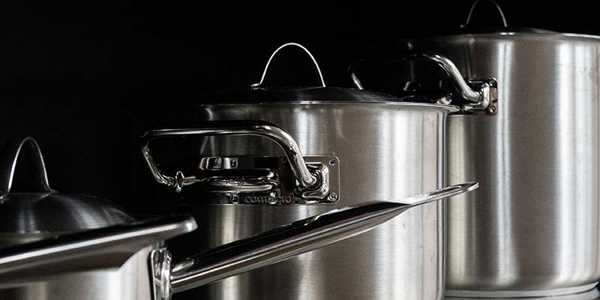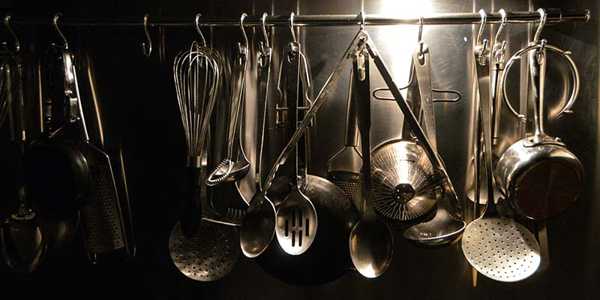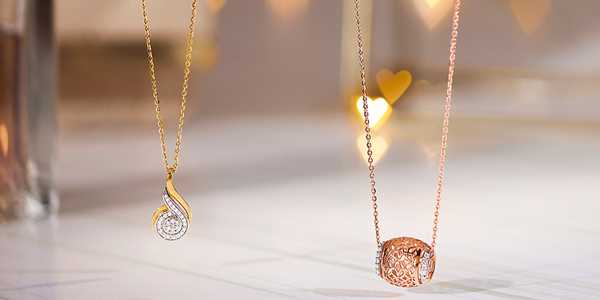How To Remove Rust From Stainless Steel
Rust can sneak up on stainless steel, dulling its shine and strength. But don’t worry—tackle it early with smart cleaning tips and easy upkeep. In this quick guide, we’ll show you how to keep your stainless steel looking sharp and lasting longer. Ready to restore the sparkle?
Rust can sneak up on stainless steel, dulling its shine and strength. But don’t worry—tackle it early with smart cleaning tips and easy upkeep. In this quick guide, we’ll show you how to keep your stainless steel looking sharp and lasting longer. Ready to restore the sparkle?
Types of Stainless Steel and Rust Resistance
Stainless steel is primarily categorized into various grades, with the 304 and 316 grades being the most prevalent. Grade 304 is renowned for its remarkable corrosion resistance and is commonly utilized in kitchen utensils, appliances, and food processing equipment. Comprising 18% chromium and 8% nickel, this alloy type is notably resilient in moderate environments.
Conversely, Grade 316 features a composition of 16% chromium, 10% nickel, and an additional 2% molybdenum, which significantly enhances its resistance to saltwater and harsh chemicals. This makes it particularly well-suited for marine applications, including boats and coastal constructions, where moisture exposure is abundant.
Effective DIY Household Rust Removal Methods
Removing rust from stainless steel can be efficiently managed using simple household items. Here are three effective methods:
- Baking Soda Paste: Create a paste by mixing three parts baking soda with one part water. Apply this mixture to the rusted area and let it sit for about 30 minutes. Afterwards, gently scrub using a soft sponge and rinse with warm water while thoroughly drying the area to prevent further oxidation.
- Vinegar Soak: Soak a cloth in white vinegar and wrap it around the rust-affected area. Allow it to sit for at least one hour, then scrub the surface with a non-abrasive sponge. Rinse with water and dry the area thoroughly.
- Lemon Treatment: Directly squeeze lemon juice onto the rust spots and sprinkle salt for greater efficacy. Let it sit for around two hours, then scrub away the paste with a cloth. Rinse the area with water and ensure it dries well.
These methods not only effectively combat rust but also utilize commonly available items, making them accessible for everyone.
Commercial Cleaners for Stubborn Rust
For more resilient rust stains, commercial rust removers can provide robust solutions. A quality rust cleaner should contain rust-inhibiting agents and be safe for use on stainless steel surfaces. Popular options include:
- Krud Kutter: A reputable product known for its rust-removing properties without causing harm to stainless steel finishes.
- CLR (Calcium, Lime, Rust): This widely available product is highly effective for stubborn rust and mineral stains.
- Bar Keepers Friend: Best known for cleaning and polishing stainless steel, this product also effectively eliminates rust buildup.
When selecting a cleaner, prioritize non-toxic and biodegradable formulations to safeguard your stainless steel while ensuring safety for food-prep surfaces. Always adhere to the manufacturer’s instructions for the best outcomes and to maintain safety standards.

Comprehensive Cleaning Process for Stainless Steel
- Preparation: Assemble materials: microfiber cloths, warm water, dish soap, baking soda, white vinegar, and a non-abrasive scrubber. Ensure that the area has adequate ventilation, especially when using any cleaning agents with strong odors.
- Initial Cleaning: Wipe the surface with a damp microfiber cloth to eliminate loose dirt and grime. This preliminary cleaning is crucial for preventing scratches during scrubbing.
- Application of Cleaner For lighter cleaning tasks, mix warm water with a few drops of dish soap. For tougher stains, sprinkle baking soda or apply white vinegar directly on the affected areas.
- Scrubbing: Use a non-abrasive scrubber to scrub the surface in alignment with the grain gently. This technique minimizes scratch risk and promotes a polished finish.
- Rinze the surface thoroughly with warm water to remove all cleaning residue, ensuring no soap is left that could dull the surface.
- Immediately dry the stainless steel with a clean microfiber cloth to avoid water spots, thereby maintaining its luster. This step is essential for long-term care and rust resistance.
Essential Tools for Maintaining Stainless Steel
Employing appropriate tools is vital for maintaining stainless steel without compromising its surface. Non-abrasive soft brushes are crucial for gently dislodging dirt while avoiding scratches. Microfiber cloths are prized for polishing and effectively trapping dirt and moisture to ensure a streak-free result. Additionally, using protective gloves is advisable to avoid fingerprints and smudges, which can affect the appearance of stainless steel. Utilizing these tools helps ensure that your stainless steel surfaces maintain their shine and integrity.

When to Call in the Professionals
Certain circumstances necessitate professional intervention when managing stainless steel items. If you encounter extensive rust damage compromising the material’s integrity or if you are faced with large stainless steel surfaces requiring specialized treatment, it is prudent to seek expert assistance. Professionals come equipped with the necessary tools and expertise to effectively tackle these issues, thus reducing the risk of exacerbating the damage. When considering a professional, expect a thorough evaluation, a detailed restoration plan, and adherence to best maintenance practices for lasting results against future rust challenges.
Proactive Measures for Rust Prevention
Regular maintenance and proper storage are integral to preventing rust on stainless steel items. Consider the following recommendations:
- Routine Cleaning: Clean stainless steel at least weekly using a mild detergent and warm water. For tough stains, opt for specialized stainless steel cleaners readily available in retail.
- Immediate Drying: After washing, dry stainless steel items immediately. Water left sitting can cause rust to appear, particularly in humid conditions.
- Appropriate Storage: Store stainless steel components in cool, dry environments, avoiding plastic wraps, which can trap moisture and promote rust.
- Protective Coatings: Consider applying a protective layer or mineral oil to the stainless steel surface. This creates a moisture-resistant barrier, enhancing durability and should be reapplied every few months for optimal protection.



